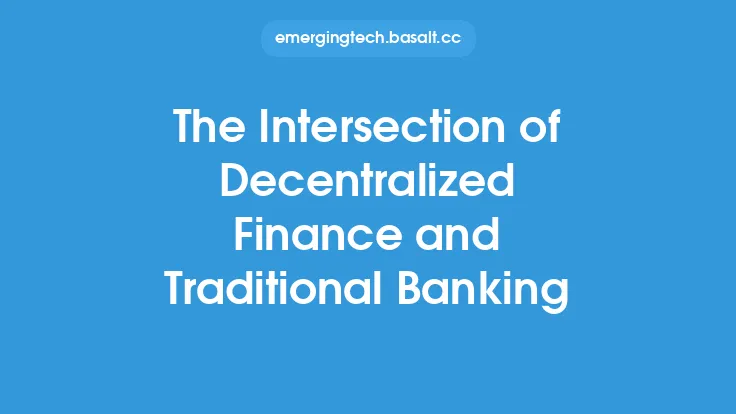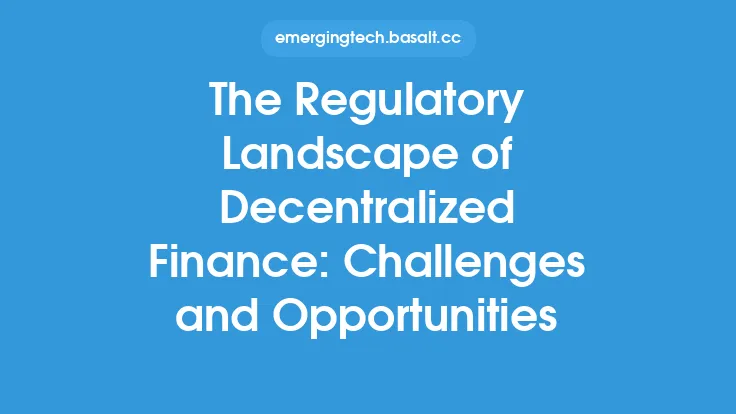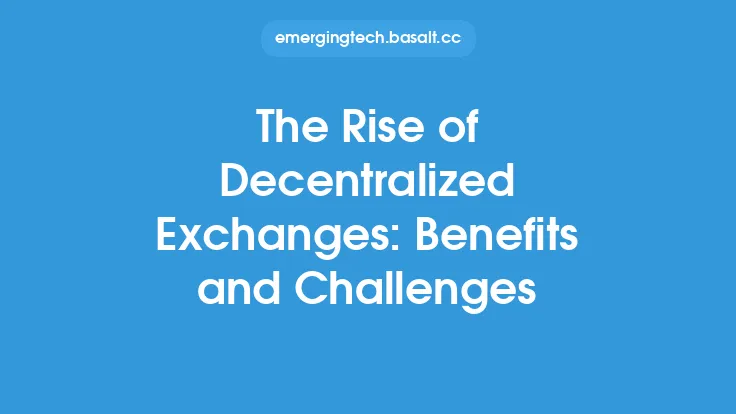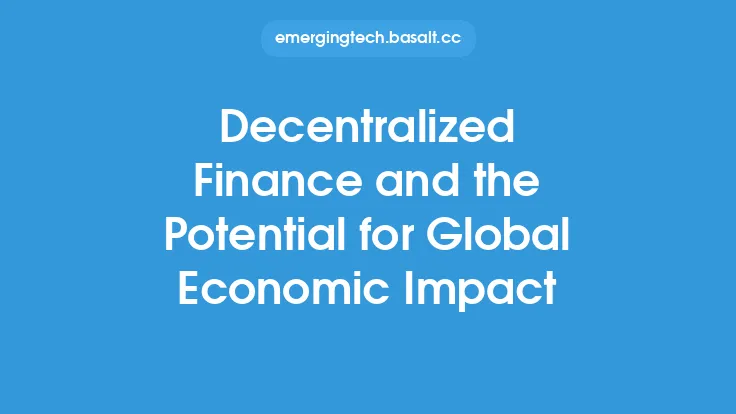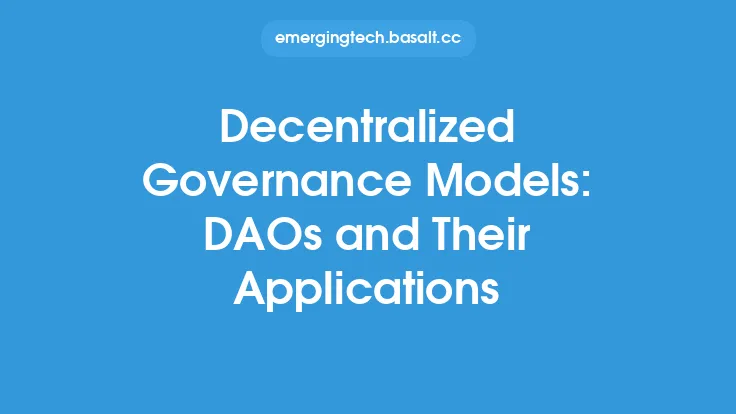The concept of decentralized finance, commonly referred to as DeFi, has been gaining significant traction in recent years. This phenomenon is rooted in the blockchain technology that underpins cryptocurrencies like Bitcoin and Ethereum, but it extends far beyond digital currencies. DeFi is about creating a financial system that operates without traditional intermediaries like banks, brokerages, and other financial institutions. It aims to provide an open, accessible, and transparent way for individuals to manage their financial assets and participate in financial services.
Introduction to Decentralized Finance
Decentralized finance leverages blockchain and smart contracts to enable the creation of decentralized applications (dApps) that can perform a wide range of financial functions. These functions include lending, borrowing, trading, and investing, among others. The key characteristic of DeFi applications is that they operate on blockchain networks, which are decentralized, meaning that no single entity controls them. This decentralization ensures that transactions are secure, transparent, and tamper-proof, as they are recorded on a public ledger that is maintained by a network of computers rather than a central authority.
The Emergence of New Business Models
The DeFi space has given rise to a plethora of new business models that were not feasible in the traditional financial system. One of the most significant models is the concept of decentralized lending platforms. These platforms allow individuals to lend and borrow cryptocurrencies in a trustless manner, without the need for intermediaries. The interest rates are determined by supply and demand in the market, and the loans are often overcollateralized to mitigate the risk of default. This model has opened up new opportunities for individuals to generate passive income and for borrowers to access capital that might not have been available to them through traditional channels.
Another emerging business model in the DeFi space is the yield farming sector. Yield farming involves using DeFi protocols to maximize returns on investments by leveraging lending, borrowing, and trading activities. It has become a popular way for investors to earn high yields on their cryptocurrency holdings, although it comes with significant risks, including the potential for smart contract vulnerabilities and market volatility. The complexity and the high-risk nature of yield farming have also led to the development of new types of investment products and services, such as yield farming aggregators and decentralized asset management platforms.
Decentralized Autonomous Organizations (DAOs)
Decentralized Autonomous Organizations (DAOs) are another crucial component of the DeFi ecosystem. A DAO is essentially a community-owned and operated entity that operates on a blockchain network. It is governed by a set of rules encoded in smart contracts, which automatically execute decisions made by the community. DAOs can be used for a variety of purposes, including investment, fundraising, and even social activism. In the context of DeFi, DAOs have been instrumental in creating community-driven financial initiatives and in providing a framework for decentralized governance and decision-making.
The Role of Stablecoins
Stablecoins play a vital role in the DeFi ecosystem by providing a stable store of value and a medium of exchange that is not subject to the same level of volatility as other cryptocurrencies. Stablecoins are typically pegged to the value of a fiat currency, such as the US dollar, and are backed by reserves of that currency or other assets. They enable users to move value around the DeFi ecosystem without being exposed to the price swings of more volatile assets. This stability is crucial for many DeFi applications, including lending platforms, decentralized exchanges, and prediction markets, where price stability is essential for their functioning.
Challenges and Opportunities
Despite the rapid growth and innovation in the DeFi space, there are several challenges that need to be addressed. One of the primary concerns is regulatory uncertainty. DeFi applications often operate in a gray area, as they do not fit neatly into existing regulatory frameworks. This lack of clarity can make it difficult for projects to understand their legal obligations and can expose them to the risk of regulatory action. Additionally, the DeFi space has seen its share of scams, hacks, and other security incidents, which can undermine trust in the ecosystem and highlight the need for better security practices and user education.
However, these challenges also present opportunities for growth and development. The regulatory uncertainty, for instance, has prompted calls for clearer guidelines and frameworks that can support the development of DeFi while protecting consumers. This could lead to more innovative and compliant financial products and services. Moreover, the security risks have driven innovation in areas like insurance, audit, and security protocols, making the DeFi ecosystem more resilient over time.
Conclusion
Decentralized finance represents a significant shift in how financial services are delivered and consumed. By leveraging blockchain technology and smart contracts, DeFi applications are creating new opportunities for financial inclusion, innovation, and efficiency. The emergence of new business models, such as decentralized lending and yield farming, and the development of stablecoins and DAOs, are all contributing to a more diverse and robust financial ecosystem. While challenges exist, they also present opportunities for further innovation and growth. As the DeFi space continues to evolve, it is likely to play an increasingly important role in shaping the future of finance.
